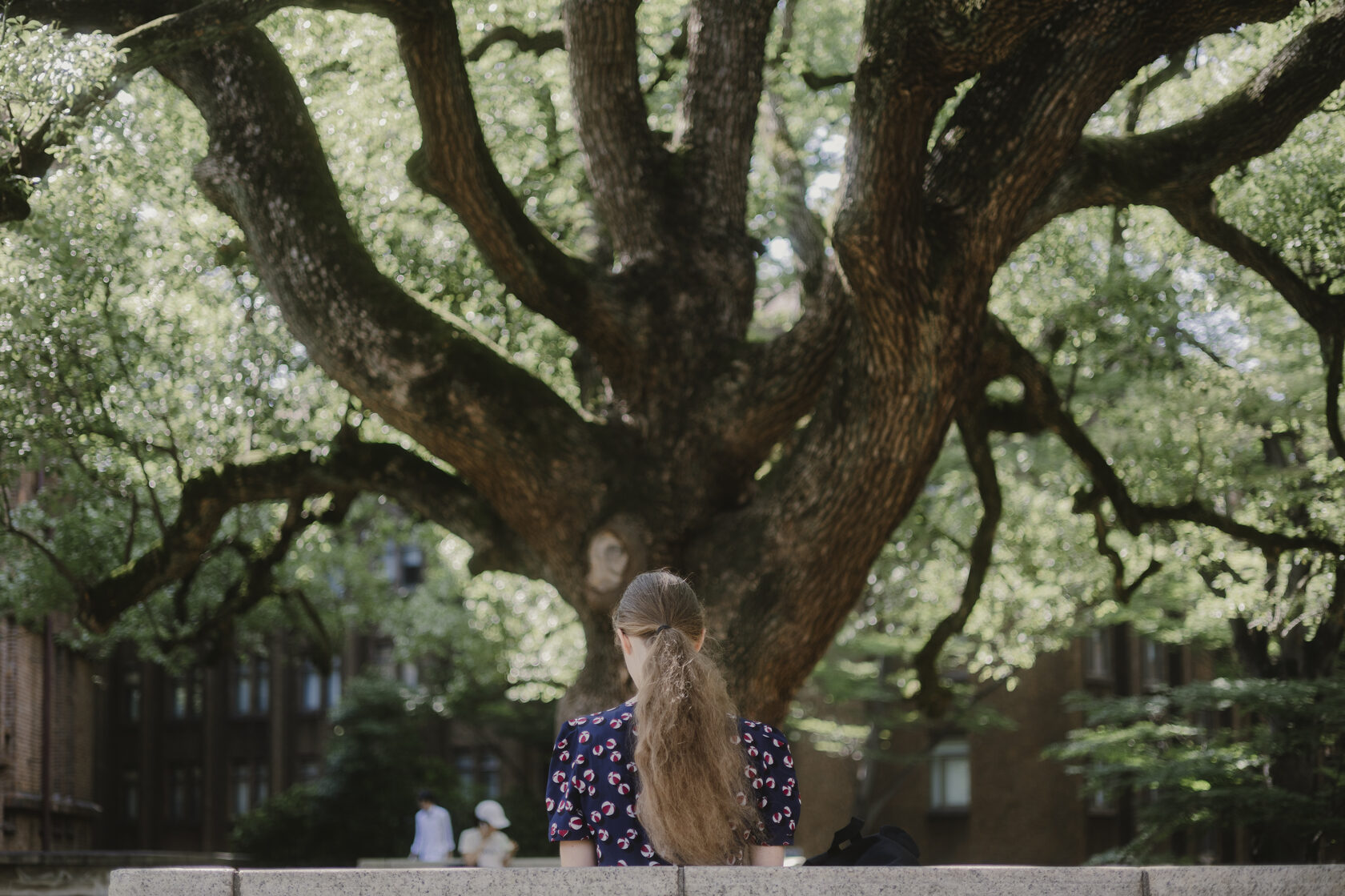It's raining cats and dogs outside. It feels like my black jeans are stuck to my legs, after I got caught in this weather’s most deafening gusts. The darkness fell on me like a blanket. Now only small lights and a neon ribbon pointing towards the exit allow me to see other people’s faces. I am surrounded by friends I haven't seen way too long, all fooling around and laughing.
This cinema in Almaty doesn’t look any different from other cinemas I’ve been to, except that popcorn here tastes better. I cannot say that Oppenheimer was the movie I was looking forward to the most, it is rather a chain of accidental events that led our friend group to this cinema hall, at this particular time due to the unfortunate weather. Many will say that it was a talented actor’s play or a fantastic cast that riveted my attention to the screen for the next three hours. However, I have to disagree. What riveted me was the everlasting sound of the Peace Bell which you inevitably hear walking down the Peace Memorial Park in Hiroshima. The memories of this city are still very bright in my mind.
This cinema in Almaty doesn’t look any different from other cinemas I’ve been to, except that popcorn here tastes better. I cannot say that Oppenheimer was the movie I was looking forward to the most, it is rather a chain of accidental events that led our friend group to this cinema hall, at this particular time due to the unfortunate weather. Many will say that it was a talented actor’s play or a fantastic cast that riveted my attention to the screen for the next three hours. However, I have to disagree. What riveted me was the everlasting sound of the Peace Bell which you inevitably hear walking down the Peace Memorial Park in Hiroshima. The memories of this city are still very bright in my mind.
It was Saturday. Sun rays reflected from the bluish water surface made me squint. It was so sunny I had to take out my umbrella. Funny enough I didn’t own one back in the UK, being used to the misty weather of the Foggy Albion. Nonetheless, I had to buy an umbrella in Japan.
Four hours on the Shinkansen, and I ended up here, in the most peaceful city on planet Earth. Hiroshima astonished me with clean streets (even compared to Tokyo), views on the Motoyasu river, and its energy.
Everything in this city was moving calmly. People were spending the day with their families. There was a swimming competition in the river. Yet I couldn’t stop the flow of tears running down my face when I came to the Atomic Bomb Dome, which is the very centre of the Memorial Park. On a day like this, 78 years ago, only in twenty seconds time, the whole city was wiped off from the face of Earth. In the first half second after the bomb detonation, the city was covered by the fiery cloud. The buildings melted and all living creatures immediately turned into ashes. Approximately 80,000 people died from the explosion, 120,000 more died from the burns and radiation.
However, it was not about the destruction this city had to witness, that made me cry, but the beauty that was created from the grief from the catastrophe. People here perfectly know their history, it left a scar on the most visible part of Hiroshima’s face, but they are smiling, knowing what they were able to conserve. The citizens of Hiroshima carry a burden of telling the world their story, they feel responsible for the world’s peace. When we think of an origami crane, we automatically think of Sadako Sasaki, who died of leukaemia ten years after the atomic bombing, the other kids who died as a result of the catastrophe, and those who can die if the story about the Little Boy used in Hiroshima will not be told.
This city put into the world the disturbing knowledge of what people are capable of, if we have no limit. As Victor E. Frankli said, “Since Hiroshima, we know what is at stake”.
The Hiroshima Peace Memorial Museum was one of those places that had the strongest impression on me. I clearly remember this light and spacious building, full of people of different nationalities, silently entering the exhibition. There was a warning sign about graphic content. I inhaled, knowing that I’m going to be emotional. It is hard not to be. There was a dark drawn clock at the entrance, showing the exact time when the bomb was detonated, as well as the exposition of how the city looked before the explosion and right after. All the victims’ clothes, photos, the stones where the shadows of the dead remained, are collected and displayed here to convey fear of the event that happened on the 6th August, 1945. The museum attempted to preserve every story of those who died and was affected by the explosion.
While being an international student, I noticed that every place you go to ultimately becomes your home one way or another. This happens for a very particular reason - you dive into the lifestyle of those around you, feel their happiness and suffering, and as a result experience changes in your personality.
But some places are definitely more moving than others. I remember coming to Japan with a particular goal of learning the language, but apparently there was so much more than that. I never knew that this trip would influence multiple parts of me. I think the city of Hiroshima is the lesson everyone should learn; the contrast between harmony of the water, the cleanness of which is attentively preserved, and the ruins of the Atomic Bomb Dome, the blossoming park and the memorials dedicated to the victims of the explosion will show the instability of our world, teach you to see the beauty in peace and silence. As the first city to be devastated by the nuclear weapon, Hiroshima is the sublime combination of humility and struggle. It is a symbol of both the dangers of nuclear war and the hope of a more peaceful future. Today it holds a special place somewhere inside of me and whenever I hear about nuclear weapons I always think about what happened there.
I spent my last day in Hiroshima in the park, watching people come and go. My ice cream was melting at its own pace, children were playing in the grass. And then I thought to myself, “How did a city with such a difficult history manage to achieve the sacred peace you feel when you arrive?” Surely with too high of a price. Eventually, I hope the peace of Hiroshima will remain, and the catastrophe will serve as a reminder that all actions have consequences, some of which are felt to this day.








